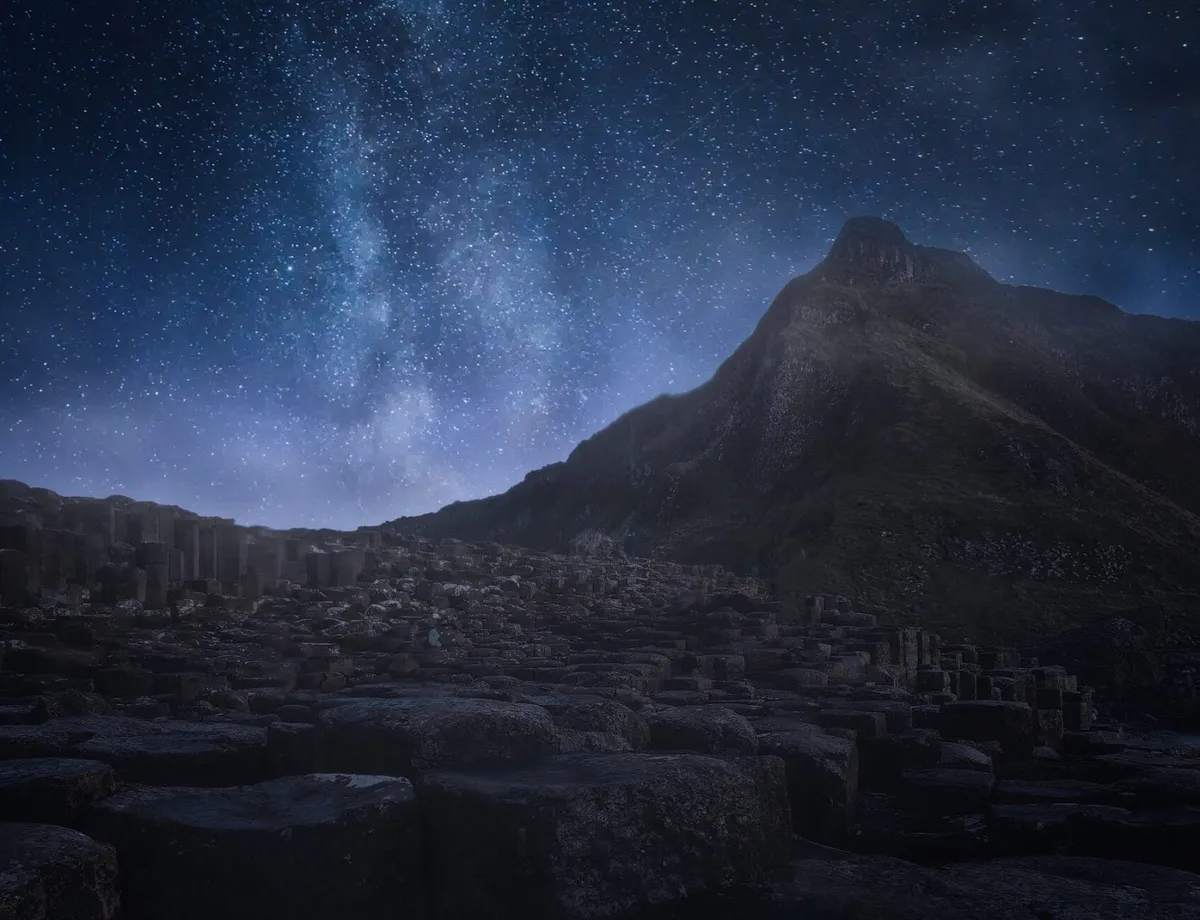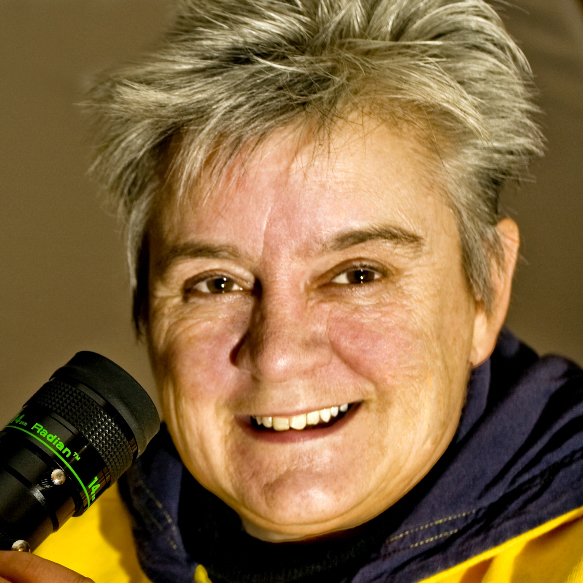Ireland offers some of the darkest night skies in Europe, boasting two International Dark Sky Places that are paving the way for astro tourism to really take hold across the island.
From the Ancient East to the Wild Atlantic Way, there is a wealth of stargazing locations with good night skies, where visiting astronomers can experience darkness of the deepest kind.
Kerry and Mayo tend to hog the dark-sky limelight in Ireland, but there are plenty of places across the island, including County Cork, the Antrim Coast in the north and, in mid-Ulster, the recently-opened OM Dark Sky Park and Observatory.
Here is my pick of the top 10 places to stargaze in Ireland.
For more general advice, read our guide on how to stargaze.
1
Lough Gur, County Limerick
Despite its proximity to the city of Limerick, Lough Gur is dark because it is nestled amongst the hills of Knockfennel and Knockadoon, shielding it from light pollution. As a result, it is currently filing for Dark Sky Park status.
The area hosts Grange Stone Circle, built in 5500 BC and aligned with the rising Sun of the summer solstice. A Solstice Festival runs every summer, with people gathering to watch the Sun rise through the entrance of the circle.
By day: Nearby Ballyhoura and Liscarroll offer beautiful natural trails and walks, while Limerick itself – capital of the mid-west – is half an hour’s drive.
More info: www.loughgur.com; www.shannonsideastronomyclub.com; www.visitballyhoura.com
2
The Antrim Coast
The Antrim coast road takes you along points where the aurora sometimes makes an impactful show. Astronomers head to Dunluce Castle (the home, with a healthy dollop of CGI, of House Greyjoy in Game of Thrones) whenever the auroral oval touches the dark skies here.
The area is also one of two regions designated as Milky Way Class by the Dark Sky Discovery Partnership, meaning our Galaxy is visible on clear nights with the naked eye.
By day: Visit the iconic Giant’s Causeway and stop for a dram at Bushmills, Ireland’s oldest whiskey distillery, or test your nerves crossing the famous Carrick-a-Rede rope bridge.
For more info: www.irishastro.org.uk; www.bushmills.com/distillery; www.discovernorthernireland.com

3
County Clare
The Milky Way seems almost touchable in many parts of Clare. The county hosts the Burren, a magnificent expanse of limestone slabs and giant boulders that looks otherworldly, especially near the Mars-like Fanore beach.
Shannonside Astronomy Club observes under pristine dark skies close to the Poulnabrone Neolithic tomb.
By day: Take a trip to nearby Doolin Cave, featuring Europe’s largest stalactite, or Aillwee Cave for its birds of prey displays to educate and excite visiting families. County Clare is also famous for its traditional music scene.
More info: www.shannonsideastronomyclub.com; www.doolincave.ie; www.aillweecave.ie
4
Sheep's Head Way, County Cork
One of my few naked-eye drawings of the Milky Way was done from Durrus on the Sheep’s Head Way peninsula in west Cork.
Cork Astronomy Club supports nearby Blackrock Castle Observatory events and hosts monthly lectures at University College Cork.
By day: Fota Wildlife Park is just 25 minutes’ drive from Cork, while the nearby Lighthouse Loop Walk is exhilarating. The area is also a hub for sailing, kayaking and scuba diving.
More info: www.thesheepsheadway.ie; www.corkastronomyclub.com; www.fotawildlife.ie
5
County Offaly
Midlands Astronomy Club observe at Clonminch near Tullamore in County Offaly. They have their own observatory and car park, and host bi-monthly observing sessions.
The club also hosts an observing event at Athlone Castle in County Westmeath several times a year.
By day: Birr Castle is home to the famous 19th-century Great Leviathan telescope, as well as beautiful gardens and nature walks, or wet your whistle at the Tullamore Dew whiskey distillery and visitor centre.
More info: www.midlandsastronomy.com; www.birrcastle.com; www.discovertullamore.com

6
Kerry International Dark Sky Reserve
With 700km2 of truly dark skies certified by the International Dark Sky Association, this area is a must for visiting astronomers. My experiences of the night sky at St Finian’s Bay in the 1980s will remain in my soul forever.
Each year the Skellig Star party takes place at Ballinskelligs, featuring quality speakers and observing sessions: it’s an astrophotographer’s paradise.
By day: Local boat trips take you to the Skellig Islands, home to the UNESCO heritage site monastery that featured in Star Wars: The Force Awakens. Visit historical buildings such as Derrynane House or stroll along the stunning beaches that County Kerry has to offer.
More info: www.kerrydarksky.com; www.kerryastronomyclub.com; www.skelligsislands.com
7
Wicklow Mountains National Park
This region is part of Ireland’s Ancient East, and within the park is the stunning and historic Glendalough monastic site with its beautiful lakes and walks. On many occasions I have witnessed really good skies here when observing Saturn at public events.
Members of the Irish Astronomical Society observe close to the national park and offer monthly public viewings in Dublin. The Irish Federation of Astronomical Societies supports Dunsink Observatory in County Dublin for events such as Solarfest, hosting international speakers and public observing sessions.
By day: Visit nearby Dublin or explore Ireland’s Ancient East via the walking trails through the beautiful Wicklow Mountains.
More info: www.irelandsancienteast.com; www.visitwicklow.ie; www.irishastrosoc.org
8
Connemara, County Galway
One of the darkest places I have travelled with my telescope has to be Inis Mór, the largest of the Aran Islands off the west coast. Accessible by ferry from Rosaveel, the island is almost devoid of light at night. Connemara offers the beautiful sight of a darkening sky enriching itself slowly over the expanse of the Atlantic Ocean.
Galway Astronomy Club observes from a site close to Bearna wind farm most Fridays. The club hosts its annual Astrofest at the Westwood House Hotel in the city of Galway.
By day: Visit colourful Galway with its pubs, traditional music and food markets, or for breathtaking scenery drive through the Doolough Valley to Delphi Adventure Centre.
More info: www.galwaycity.ie; www.galwayastronomyclub.ie; www.delphiadventureresort.com

9
Mayo International Dark Sky Park
This park on the brink of the Atlantic Ocean offers 110km2 of grassland and wilderness with designated areas for astronomers to observe under pristine skies; there’s also a visitors’ centre and exhibition space.
It is, along with Kerry, one of two IDA Dark Sky Places in Ireland, and developing astro tourism is supported by the local council and National Parks and Wildlife Service. Mayo Dark Sky Festival takes place every year.
By day: The Greenway off-road cycle trail is the longest in Ireland, while the scenery of the Wild Atlantic Way speaks for itself.
More info: www.mayodarkskypark.ie; www.wildatlanticway.com; www.greenway.ie
10
Rathbeggan Lakes, County Meath
Though only a short drive off the motorway, Rathbeggan Lakes is still remote enough to give suburban astronomers a taste of the dark side. Meath Astronomy Group often meets at the lakeside to observe the night sky.
Nearby, Newgrange prehistoric monument is aligned with the rising Sun during the winter solstice, and equinox festivals are held at the megalithic Loughcrew Cairns.
By day: The ancient monuments of the Hill of Tara are worth a visit, or try a spot of zip lining, archery, climbing and other outdoor activities at Loughcrew Adventure Centre.
More info: www.meathastronomy.weebly.com; www.loughcrew.com; www.hilloftara.org
Dark-sky map of Ireland

Ireland's astronomy trail
Plan your visit to Ireland via the Irish Astronomy Trail and learn more about our heritage of observing the stars. The route spans the island and takes in eight of its major astronomical landmarks.
- Dunsink Observatory in Dublin has its astronomical roots planted in the 1700s and welcomes thousands of visitors every year. Its beautiful 11.75-inch refractor was built in 1868 and is still in use for public outreach today.
- Newgrange in County Meath is the oldest astronomical observatory in the world, taking visitors back in time to wonder at the prowess of ancient astronomers.
- Armagh Planetarium holds excellent exhibitions and star shows, while nearby Armagh Observatory has an original Grubb Telescope Company refractor, as does Crawford Observatory in Cork.
- Blackrock Castle Observatory, also in Cork, has a vibrant educational programme.
- Birr Castle in County Offaly has a science centre and is home to the historic Leviathan of Parsonstown, once the largest telescope on the planet. The science centre displays include the original drawing of the Whirlpool Galaxy, M51, by the third Earl of Rosse.
- The Imbusch Observatory in Galway is the youngest public observatory in Ireland, having opened in 2004. It hosts free open evenings once a week during winter.
More info www.astronomytrail.ie
Deirdre Kelleghan is an artist, astronomer and co-author of Sketching the Moon: An Astronomical Artist’s Guide. This article originally appeared in the May 2017 issue of BBC Sky at Night Magazine.
